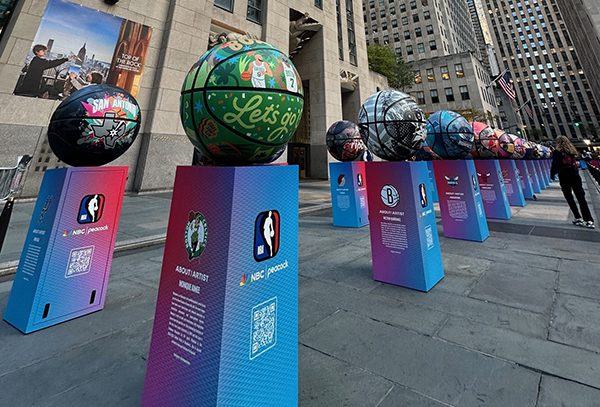 Marketers and businesses are increasingly using AI to automate functional processes as well as customer interactions. AI has been shown to help brands understand their audience better, reach them at the right times, improve the accuracy of marketing campaigns, and enrich user experience, ultimately leading to cost savings and better ROI.
Marketers and businesses are increasingly using AI to automate functional processes as well as customer interactions. AI has been shown to help brands understand their audience better, reach them at the right times, improve the accuracy of marketing campaigns, and enrich user experience, ultimately leading to cost savings and better ROI.
The question marketers are failing to ask, however, is “Are consumers satisfied with the buying experience?”
The paradox of today’s data-driven, AI-driven marketing is that despite a large number of channels that provide information and customer service (Hello, chatbots!), consumers are craving more human experiences.
In a report titled Are You Listening? The Truth About What Customers Want in a Digital World, Calabrio found that three out of four consumers in the US and UK are more loyal to businesses that give them the option to interact with a human as opposed to only chatbots or digital channels. That’s not all—a full 37% question the legitimacy of the company itself, if not given the option!
So how does a brand reap the benefits of marketing automation, and become more “human” at the same time? The answer lies in organizational empathy.
Does Empathy Matter in Marketing?
In marketing, we talk so much about customer journey and experience. Antonio Damasio, eminent neuroscientist and Professor of Psychology, Philosophy, and Neurology, at the University of Southern California, said: “We are not thinking machines that feel, we are feeling machines that think.”
This is underscores the importance of empathy in marketing and customer experience, especially where AI is involved.
You May Also Enjoy:
- Q&A: Michael Brenner on Empathy and Marketing
- AI Helps KPMG Realign Digital Marketing Focus
- AI Could Drive Double Digit Marketing Growth
In an article on Clickz, Kevin Lindsay, director of product marketing at Adobe, explained how AI has the potential to beat human marketers at analyzing visitor and customer attributes, processing the most relevant ones, personalizing touchpoints in real-time, and delivering the right solution, all at scale. However, using AI to know how their customers are feeling at the moment, and humanizing their experience, is still a “brand fantasy.”
Because as Mary Beech, CMO and VP, Kate Spade, so eloquently puts it, “The best marketing isn’t about the brand; it’s about the customer.”
The Limits of AI, Automation, and Martech
Even though AI has pervaded every aspect of modern life and artificial empathy is now a thing, technology still has some way to go beyond “Alexa, what should I cook for dinner?”
While we’ve been debating the ethical complexities and utopian avatars of AI for long, the deepest of deep minds still remains a few marbles short of the average human marketer. Here are some inadequacies that might limit the level of automation you can achieve:
- Complexity of implementation: “Algorithms” and “models” are terms full of limitless possibilities, but they are guzzlers of resources, time, effort and money. They need time and expertise to research, set up, test, and implement. After that, there is a steep learning curve for the end users if they are to make the most of it. Finally, there is an intensive (and expensive) maintenance process that involves constant verification of data and results.
- Robotic customer service: Chatbots can seem human-like to most customers most of the time. Until of course an issue that the machine hasn’t learned how to deal with crops up. The lack of emotional intelligence or knowledge of nuances in language can lead to bots being anything from unhelpful to offensive to spooky at times.
- Uncertainties: The absence of human discretion leads to the system making some not-so-tactful or ineffective decisions. Do you really need to send an email for every action a user takes within your app? Why do you need them to log in with their Facebook account? Should you wish them on their anniversary when you can’t be sure they’re divorced?
When businesses use technology such as AI and automation to boost efficiencies, the outcomes will scale quickly. Managing the consequences calls for not just empathy, but alignment of “purpose” between the brand and its consumers. But while humans survive on meaning and a sense of fulfillment, machines thrive on clear instructions.
Kate O’Neill, who calls herself a “Tech Humanist” and is the author of a book of the same name, explains that this is why businesses that transform themselves digitally need to do so in a human-centric way and communicate their purpose to their customers.
By clarifying their strategic purpose, organizations can not only provide better customer experiences, but also increase brand loyalty, build a community, as well as foster a meaningful and productive work culture.
Empathy is the Missing Link between AI and Humans
“Empathetic marketing” connects companies, brands, employees and customers in a harmonious, productive and win-win way. You might be forgiven for thinking that ROI and the bottom line is all that matters to companies. While authoring my first book The Content Formula, I stumbled on the counter-intuitive secret to selling: Don’t talk about the stuff you sell.
“Then what should we talk about?” I hear you asking. Show, don’t talk. Show empathy towards your customers. Help, don’t sell. Help them solve a problem.
When marketers and ad execs walk into their office every day, a strange thing happens. They relish the idea of using data to “target” their customers with branded messaging. They begin to see “people” as users, leads, personas, prospects, audience, cohorts or whatever label is the flavor of the day. They forget that people don’t want to “consume” an AI-chosen ad 15 times during the course of an hour-long show or watch a 20-second pre-roll before a one-minute video.
Noah Fenn, global lead, strategic partnerships at Google, calls this phenomenon collective amnesia of marketers.
And the only antidote on offer is empathy. Put yourself in the shoes—or more accurately, behind the screens—of consumers. Listen to them and deliver the experiences that they want, not the ones you’d like them to have.
Consider the Cleveland Clinic. They produced a video titled “Empathy: The Human Connection to Patient Care” to encourage their 40,000+ employees to understand and imbibe the brand’s core value of empathy and premise of treating every patient (their customer) as they should be treated.
The fragments show the pain, struggle, and victories that unfold in a hospital setting. Amanda Todorovich, Cleveland Clinic’s director of content, decided to go social with the video. The tear-jerker touched the hearts of over four million viewers, earned Amanda the Content Marketer of the Year award from CMI, and played a central role in taking Cleveland Clinic’s blog from 0 to 67 million visitors in a span of six years. It generates enough revenue to cover the costs of their content expenses, reaffirming the proposition that empathy is the counterintuitive secret to success.
Amber Osborne, CMO at Doghead, reinforces the notion that it’s people who make a product. “No matter what you are trying to build, if you know in your heart it’s something valuable, keep pushing, keep building, keep networking. Our community members, our customers and the amazing success stories of our product keep us going every day,” she affirmed.
Be Human, Do Human
“We don’t focus on our customers,” said no one ever. And yet, marketers fail miserably at empathizing with customers. In order to fix the brand-customer empathy gap, you need to ask (and honestly answer) yourself:
- Do you understand the core emotional motivators of your customers? Does your messaging resonate with these motivators?
- Do you build a connection before you attempt a conversion?
- Do you test your assumptions and biases for every marketing campaign?
- Does your AI-driven revenue model incorporate the nuances of empathetic marketing?
Once you base your marketing, sales, and business growth on empathy, you’ll start gleaning insights that scale up your revenues while building lasting relationships with your customers.
Michael Brenner is the author of “Mean People Suck.”



